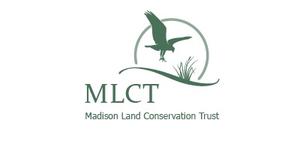From the trailhead, the trail descends a short distance to the bottom of the slope and turns right (north) past a large beech tree with an unusual grafted branch. On the left side of the trail are excellent views of a rock ledge that runs parallel with the trail and is on the other side of a low wet area. The forest composition in this narrow valley is quite diverse with beech, red, and sugar maples, red, black, white, and chestnut oaks, black and yellow birches, white ash, and hickory.
The trail passes over broken rocks of ancient granite, and just to the right of a large rock outcrop. Note the embedded vein of white quartz. To the left, the valley floor slopes noticeably downward and to the north. The trail eventually passes just to the left of and along a stone wall—the western boundary of Southern Regional Water Authority land. From this point, the trail leads gradually to the west and onto the ridge of a hogback and then descends, crossing a small stream (0.4 miles from the trailhead). This stream, flowing north into the Hammonassett River watershed, originates in a wetland perched above and behind the ledge face to the southwest.
The trail then doubles sharply back southward (left) along the stream and close by the rock faces seen earlier. Soon, it passes close to a magnificent Indian rock shelter. As a winter home for an Indian family, this shelter was probably ideal as it faces away from winter storms and is close to a good source of water. The trail soon crosses the stream near where it enters the valley. A series of small waterfalls often occurs where the stream tumbles down over rocks, and in the winter sometimes creates a beautiful cascade of ice falls and icicles.
On this side of the valley, the forest floor is densely covered by ferns, while fallen tree trunks and rocks are blanketed by mosses. The trail here is quite rough as it passes over and around rocks that have fallen from the ledge faces. The trail soon enters a dense laurel thicket and then, close to a sheer rock wall, an area rich in hemlock. Once a cool shaded glen, this area is now being opened up as many hemlocks are being damaged and killed by the hemlock woolly adelgid, a foreign insect that reached Connecticut’s southern shores in the mid-1980s.
There are several good examples on the cliff face where trees have become established in cracks in the rock. As tree roots grow they will cause rocks to split away and fall. The many large rocks at the cliff base suggest that this process has been underway for a long time.
Within the low wetland are what appear to be several large vernal pools, an important habitat for several species of salamanders and frogs. The watershed now drains to the south and soon becomes more defined as the headwaters of the Neck River. A bit further along the trail passes close to another probable Indian rock shelter partway up the cliff face. The distinctive floor of light-colored, hard granite formed a plane of weakness with the softer rock above and helps explain why this cave formed here.
Just past the cave, where the death of hemlock has created a large opening, the trail turns sharply east (left) and crosses the Neck River. The crossing can be difficult in times of high water. At the top of a small rise, the trail cuts back north (left) along another small hogback where fine views of the rock face can be seen. The trail then cuts to the east-southeast (right), then bearing right at a trail junction, ascends a spur trail to an overlook of Bartlett Pond, now called Sunset Lake. At the junction along the spur trail, the trail heads north through some magnificent beeches and oaks and crosses the Neck River flowing from Bartlett Pond eventually returning to the trailhead. Part of this last section passes over a narrow right-of-way.
Indian Rock Shelter “Caves.”

Take Summer Hill Road North. Take the second left onto Twilight Drive and continue until Lake Drive. Park in the cul-de-sac where the trailhead to Indian Rock Shelters is located (76 Lake Drive, Madison, CT 06433).
Success! A new password has been emailed to you.